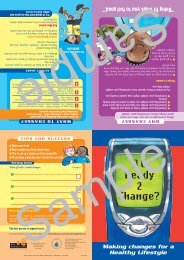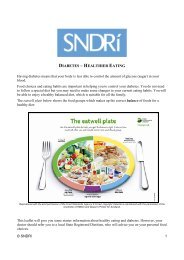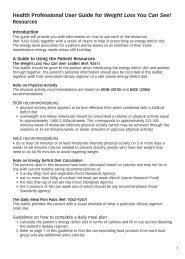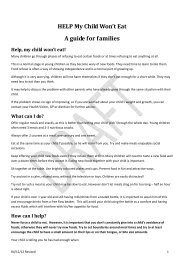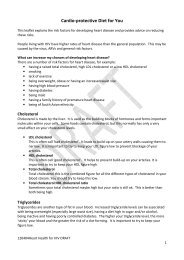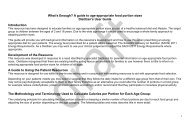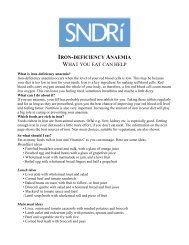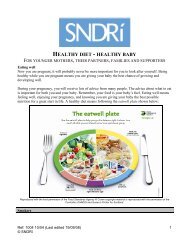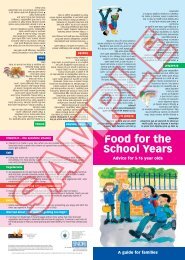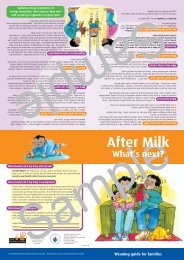9225Introduction to CHOCounting.pdf - NDR-UK
9225Introduction to CHOCounting.pdf - NDR-UK
9225Introduction to CHOCounting.pdf - NDR-UK
Create successful ePaper yourself
Turn your PDF publications into a flip-book with our unique Google optimized e-Paper software.
The handy hints below will help you get started:<br />
• Keep digital scales, a calcula<strong>to</strong>r, a pen and notebook <strong>to</strong> hand in the kitchen.<br />
• Always use the largest c a r b o h y d r a t e figure on nutritional labels. This is the t o t a l amount of<br />
c a r b o h y d rate and includes both the ‘of which sugars’ a n d ‘of which starch’ a m o u n t s.<br />
• When you have weighed food, put it in<strong>to</strong> a cup or bowl so that you know how much food<br />
they hold and you won’t have <strong>to</strong> use the scales every time.<br />
• Don’t confuse uncooked (dry) and cooked weights. Always try <strong>to</strong> follow packet cooking<br />
instructions and use nutritional labels <strong>to</strong> count your carbohydra t e.<br />
• Use a timer <strong>to</strong> cook rice and pasta <strong>to</strong> ensure consistent cooked weights.<br />
• Try <strong>to</strong> become familiar with what foods look like on the plate. This will help you judge how<br />
much carbohydrate is in meals and snacks when you are away from home.<br />
• Foods are often a mixture of protein, fat and carbohydra t e. Remember <strong>to</strong> count carbohydra t e<br />
content in foods such as breadcrumbs on fish, pastry on a meat pie and quiche.<br />
My handy hints<br />
15 00




